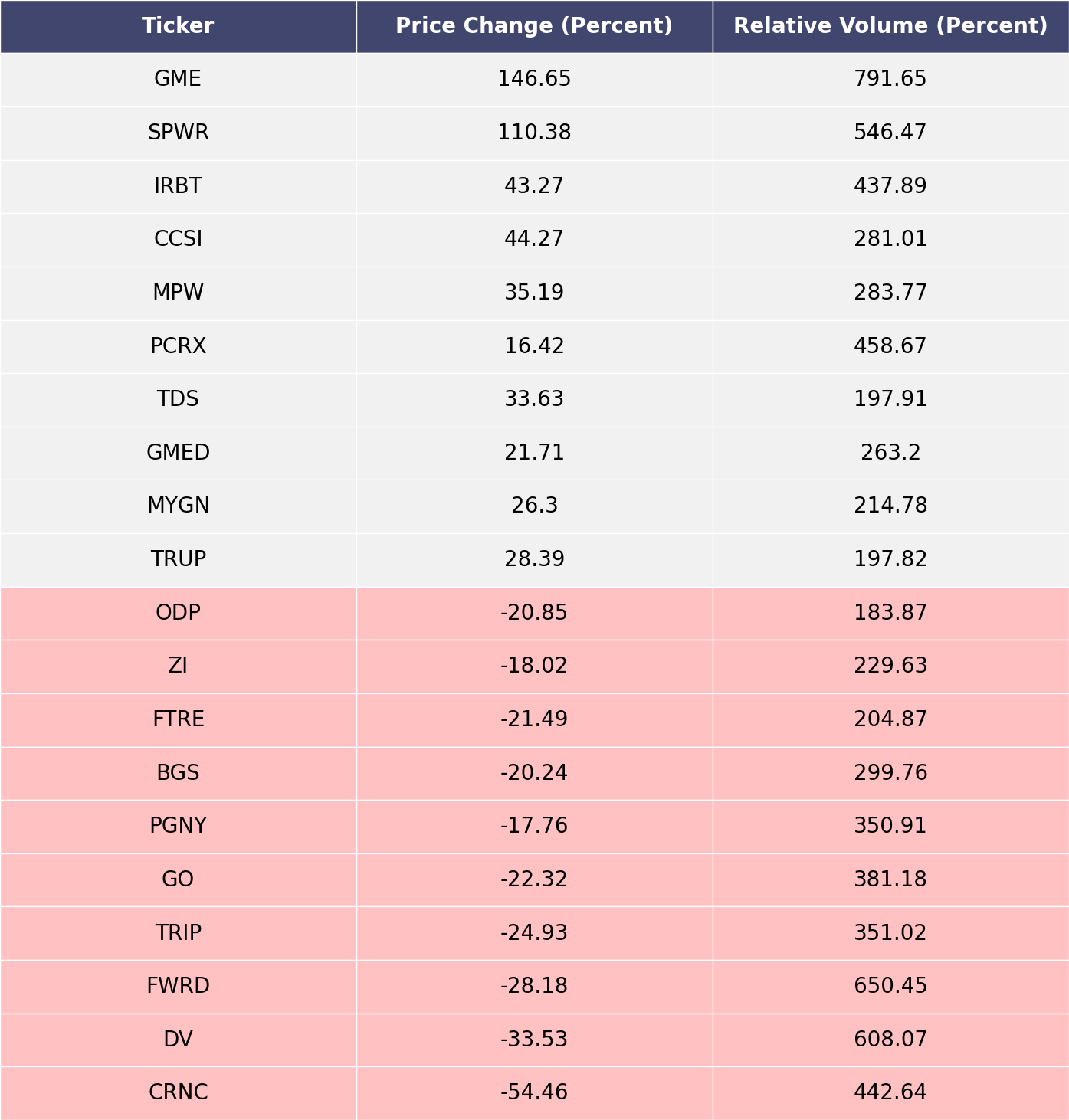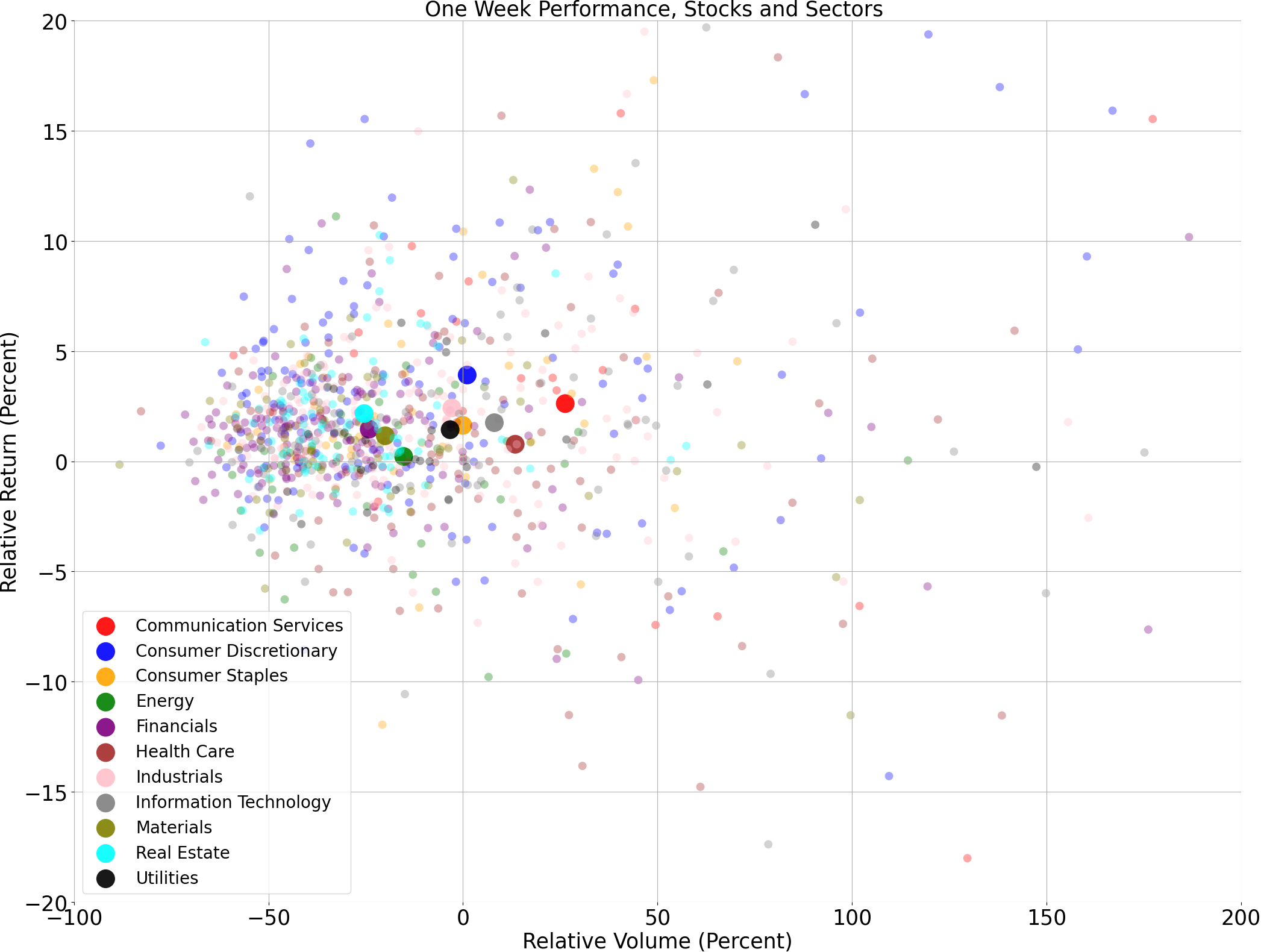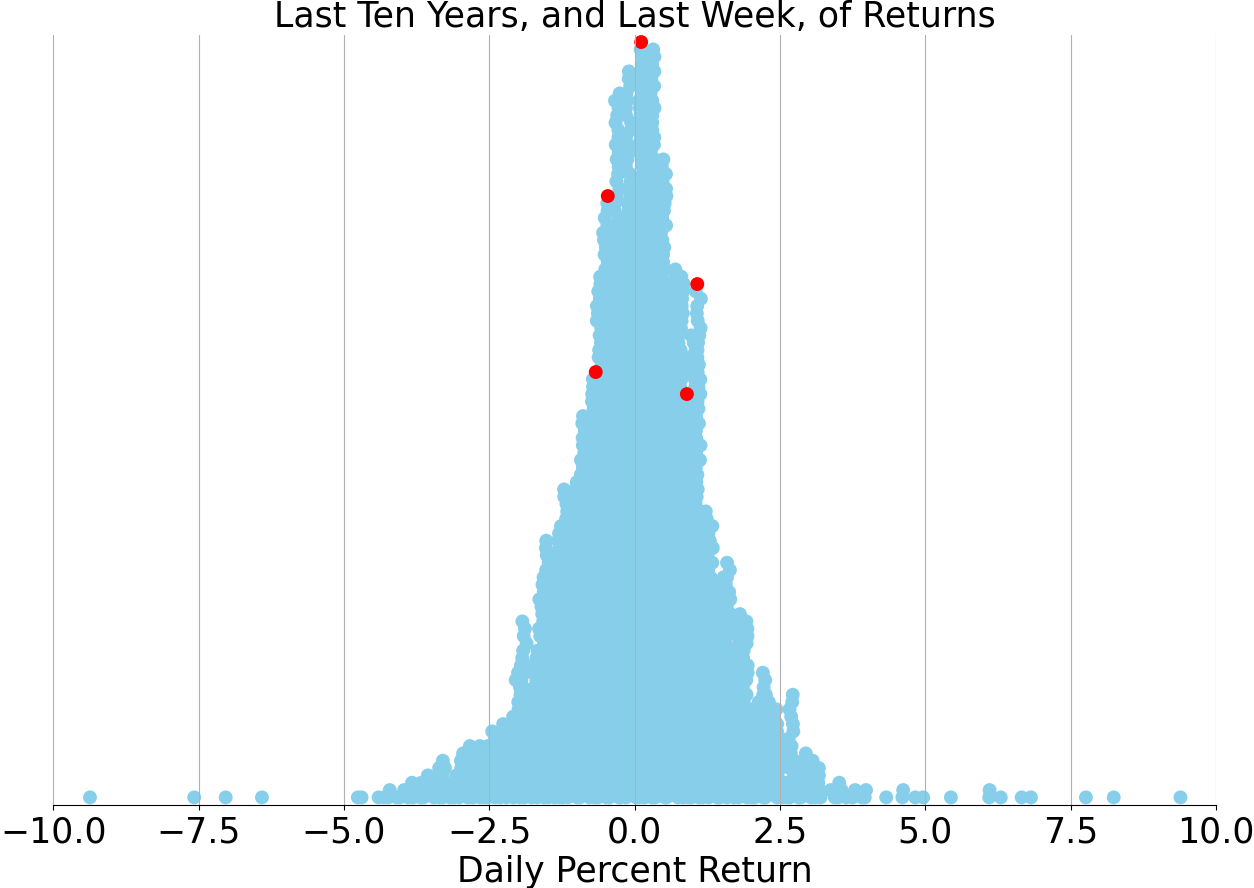The Wednesday Roundup: May 15, 2024
Recently, concerns over stagflation have been reverberating through Wall Street...

The biggest movers over the last week on price and volume (Mid Cap S&P 400 and Small Cap S&P 600)

Price and volume moves last week for every stock and sector (Mid Cap S&P 400 and Small Cap S&P 600)

Last week vs. history (Mid Cap S&P 400 and Small Cap S&P 600)

AI Oracle Commentary (Alpha testing)
As we navigate through the current market landscape, it's impossible to overlook some of the predominant headlines that are shaping up to have far-reaching implications. Recently, concerns over stagflation have been reverberating through Wall Street as Barclays has identified key U.S. stocks that could suffer the most in such an environment. Additionally, the Federal Reserve's tentative stance on future rate hikes, voiced by Fed President Neel Kashkari, continues to keep investors on edge. Meanwhile, geopolitical tensions, economic uncertainties stemming from inflationary pressures, and sector-specific tremors—as seen with Disney's 10% stock dip and Nvidia's reduced holdings by Stanley Druckenmiller—paint a complex tableau of the market's current state.
While the present may seem fogged by a unique blend of tribulations, these feelings of uncertainty are not unprecedented. Looking back over the last 50 years, we've observed several periods where the market faced significant upheavals. From the stagflation of the 1970s to the dot-com bubble burst in the early 2000s, and the more recent 2008 financial crisis, every epoch of market turbulence has contributed layers of learning for investors. Each period was marked by unique catalysts, but common threads of fear, overreaction, and eventual correction can be found weaving through these historical tapestries. For instance, the oil crisis of the 1970s forced investors to reassess energy dependencies, similar to how today's tech and ESG (Environmental, Social, Governance) oscillations are pushing new evaluative frameworks.
Quantitatively, the stock market's historical performance offers a beacon of cautious optimism. The S&P 500, for example, despite its volatility, has yielded an average annual return of around 10% over the past half-century, accounting for periods of intense volatility and relative growth alike. When juxtaposing past and present, similarities emerge in market behavior patterns: elevated volatility often preludes a rebound, albeit the timing remains unpredictable. Given the present amalgamation of economic signals—rate uncertainties, inflation, sector-specific shocks—I foresee a potential correction phase followed by a recuperative uptrend for the broader market. Specifically, I predict that the S&P 500 could see a near-term correction of 5-10% in the coming months, but over a one-year horizon, a rebound that lifts the index by approximately 7-9% from its current levels might be realistic. This projection hinges on historical resilience patterns and the anticipation of gradual recovery from prevailing economic jitters.
Thus, while the immediate outlook appears fraught with challenges, historical precedence directs us towards preparing for recovery phases punctuated by more disciplined and informed investment strategies. By learning from past patterns and staying vigilant to current realities, investors can navigate these choppy waters with a steadier hand.
AI stock picks for the week (Mid Cap S&P 400 and Small Cap S&P 600)
Subscribe for AI stock picks (it's free!)



